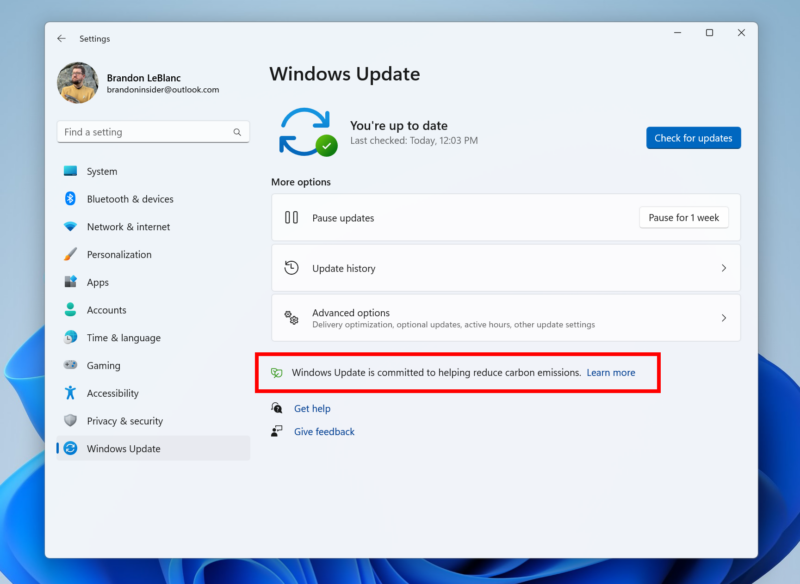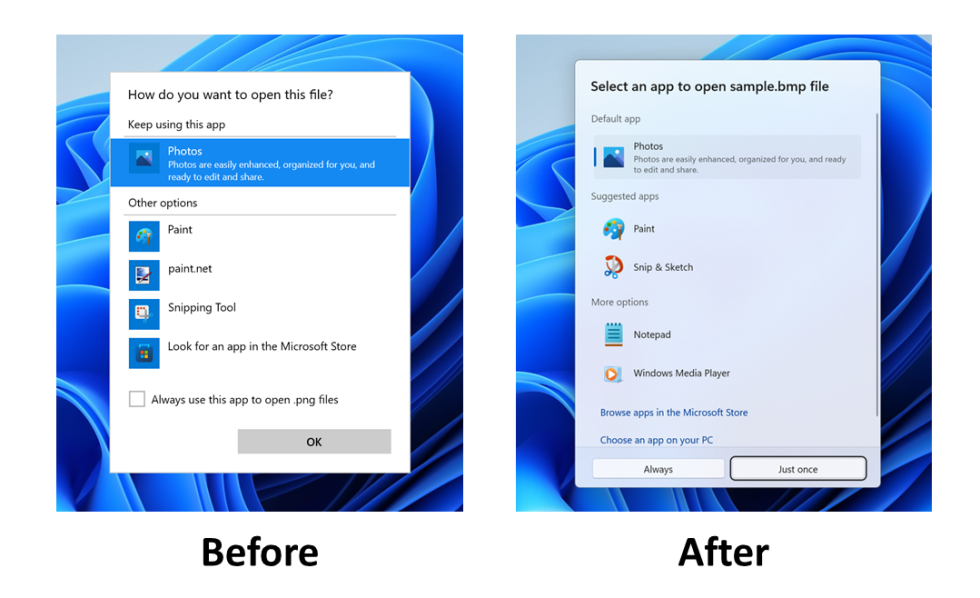
Microsoft
A future Windows 11 update might make your PC more environmentally conscious. In the latest Windows Insider preview build released to the Dev channel, Microsoft is testing out a new feature that it says might help reduce carbon emissions. Using “regional carbon intensity data” from electricityMap and Watttime, Windows will keep tabs on what kinds of power your electrical grid is currently using and will attempt to install updates “when greater amounts of clean energy sources (like wind, solar, and hydro) are available.
Prior to this, Windows Update’s dynamic scheduling would mainly try to install updates at times when you weren’t likely to be using your computer. The feature won’t work if those carbon-intensive data sources aren’t available in your area, and they also only apply to PCs that are plugged in, not those running on battery power. Users can still opt to install updates manually whenever they please.
Elsewhere, the new developer build continues the rapid rate of changes we’ve seen since Microsoft got its big Windows 11 update out the door to the public last month. The “open with” dialogue box that pops up sometimes after you install new apps has been changed from a square-cornered Windows 8- and 10-era design to a new Mica-infused Windows 11 look. More Microsoft account settings are manageable from within the Settings app. The animations that accompany some touch gestures have been refined. Searching for things in the Settings app should be more accurate, and the Settings app has been tweaked “for a consistent look and feel across the app.”

Microsoft
The build also introduces a not fully explained new app security feature called “Smart App Control,” which will only be enabled on clean installs of this new Insider build. Smart App Control delivers “enhanced protection from untrusted apps,” but it will first evaluate your system for an undisclosed period of time to “learn if it can help protect you without getting in your way too much.” If it doesn’t “get in the way too much,” it will stay on. If it does, it will switch itself off. A security feature that shuts itself off if it’s doing its job too well sounds strange, but we’ll need to wait for Microsoft to share more about what it’s doing and how it’s working.
Microsoft says that not all of the features documented in its post will have rolled out to all Windows Insiders yet, in keeping with a promise to do more experimental A/B testing in Windows Insider builds this year. A few features that had only been rolled out to select Insiders in previous builds—the redesigned Task Manager, more available commands for the voice typing accessibility feature, and others—should be available to all Insiders starting with this build.
Listing image by Microsoft